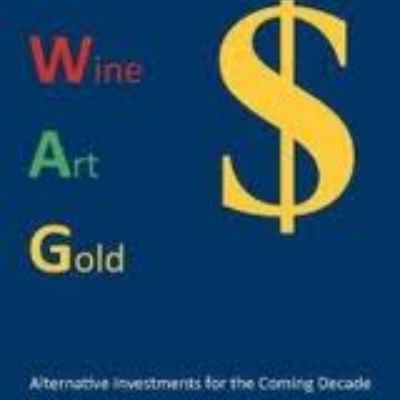
SWAG
As money-printing and inflation threaten to devalue the US dollar, diversifying your investment portfolio with Silver, Wine, Art or Gold—a collection of alternative investments that author Joe Roseman has dubbed “SWAG”—may be a very wise decision. SWAG has been described by Reuters as “real assets that just might outperform if official policy causes the money supply to surge.”
While the country’s deficit continues to rise, investors frustrated by the performance of traditional markets in the last decade are turning to tangible assets. Physical assets like fine wine work on the simplest of economic principles: a limited supply and increasing demand, which has the effect of driving up prices. Unlike some traditional assets, these alternative investments come with no incumbent debt attached.
Alternative assets include coins, stamps and other collectables, which due to their detachment from mainstream financial markets have been used to diversify investors’ portfolios for centuries. A critical factor in the success of fine wines as assets is that their end consumer typically comes from the world’s wealthiest demographic. Unlike the majority of us, these consumers don’t depend on the success of the wider economy for their spending power. So-called “prestige asset” demand from China, still only in its infancy, is adding to the effect of super-rich consumers, and already the resulting supply imbalance has caused the case prices of certain châteaux to skyrocket.
Of all the alternative assets, wine has earned the greatest reputation for stability and low risk. This is largely due to the longevity, brand reputation, and strictly controlled production methods of First Growth (Premier Cru) Bordeaux, which have contributed to its history of consistent economic performance.
Why would a US investor—new to the fine wine commodity market—consider investing in wines held in the UK? The simplest answer is the liquidity of the UK market, which gives greater opportunity for high resale value. It’s also important to note that England has over five centuries of experience in fine wine storage, beginning in the time of Eleanor of Aquitaine (French wife of the English king Henry II) and continuing to this day with advocates like Baroness Philippine de Rothschild, owner of the Mouton-Rothschild Premier Cru. The Baroness Philippine believes British-stored wines taste even better than those stored in their place of origin in Bordeaux. The Queen agrees, and as a Westgarth customer your wine could sit alongside hers in Corsham Cellars, Wiltshire.
To assure ourselves of the viability and consistency of fine wine as an investment, we can only look to the past. A review of fine wine’s performance history reveals that this tangible asset has outperformed traditional markets, and so represents a valuable addition to your portfolio. But why invest in fine wine today? Joe Roseman predicts that financial uncertainty lies ahead of us, and in these challenging conditions, wine may just be your ticket to success.
Also in News

Inside Champagne: sub-regions and “ladders of growth”
Champagne has set the benchmark for traditional method sparkling wine production


